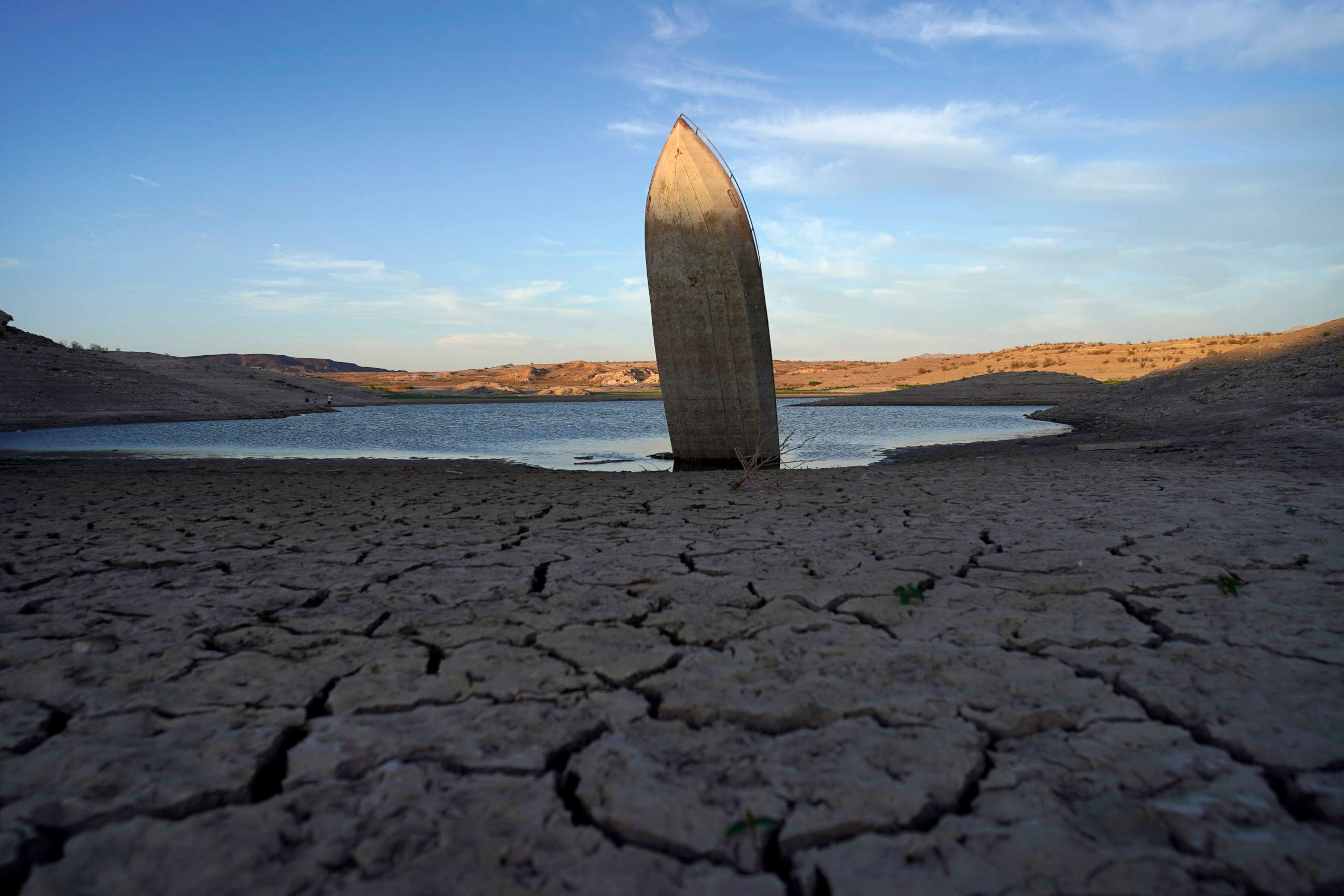Water levels at Lake Mead dangerously close to hitting 'dead pool' status
Elevation is about 150 feet from being too low to flow downstream from the dam.
Water levels in Lake Mead are continuing to deplete to dangerous levels -- so much so that the reservoir could soon hit "dead pool" levels.
Lake Mead, formed by the Hoover Dam on the Colorado River, is the largest reservoir in the U.S. and supplies drinking water to millions of people in California, Arizona, Nevada, and part of Mexico. Water levels have continued to hit all-time lows since last year and are now getting dangerously close to becoming a "dead pool" -- when water won't flow to a dam, and is too low to flow downstream.
The minimum surface elevation needed to generate power at the Hoover Dam is 1,050 feet, according to the U.S. Bureau of Reclamation. Anything below that is considered "inactive pool," and a "dead pool" exists at 895 feet in elevation.

The water levels at Lake Mead measured at 1043.82 feet Thursday morning, records from the Bureau of Reclamation show, making it less than 150 feet away from becoming a dead pool.
The megadrought has become so intense that last month, the receded waters in Lake Mead revealed multiple human bodies, some that may have been dumped in the reservoir.
The first-ever water shortage was declared for Lake Mead last August, prompting a reduction in water releases to Arizona, Nevada and Mexico in an effort to keep generating power and providing water for essential uses. Levels at Lake Mead are projected to hit a level that could require additional cuts in July 2023, according to the Bureau of Reclamation.
This year, water levels will likely continue to dry until the wet season begins in November.




